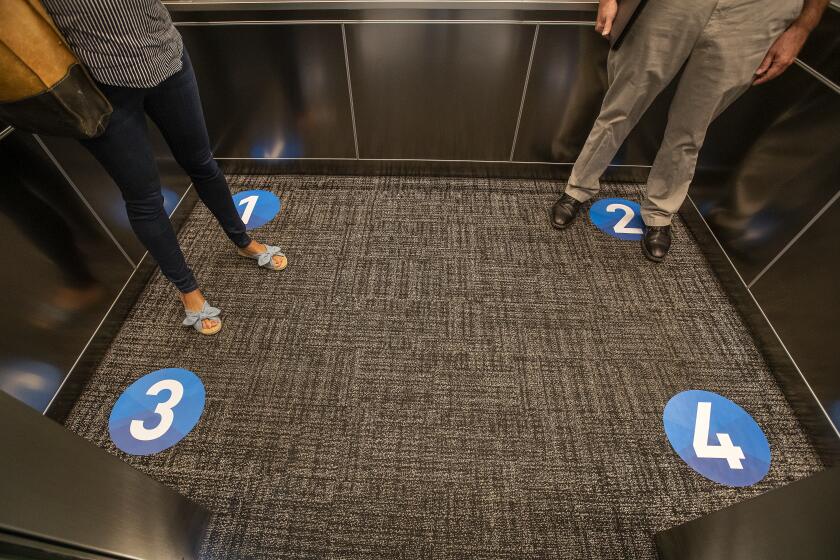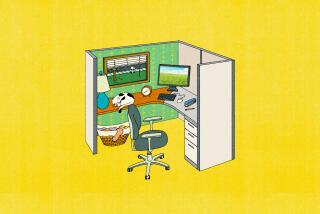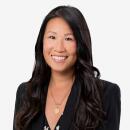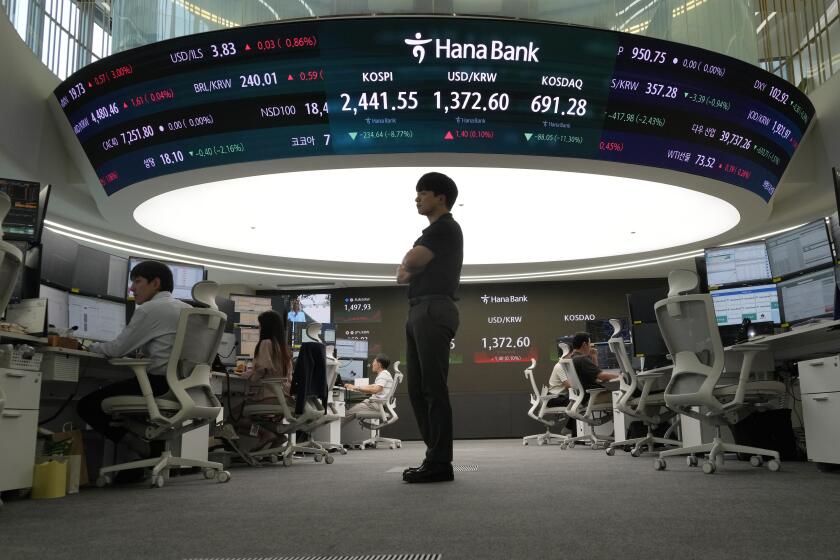L.A. employers are preparing for your return. Here’s how
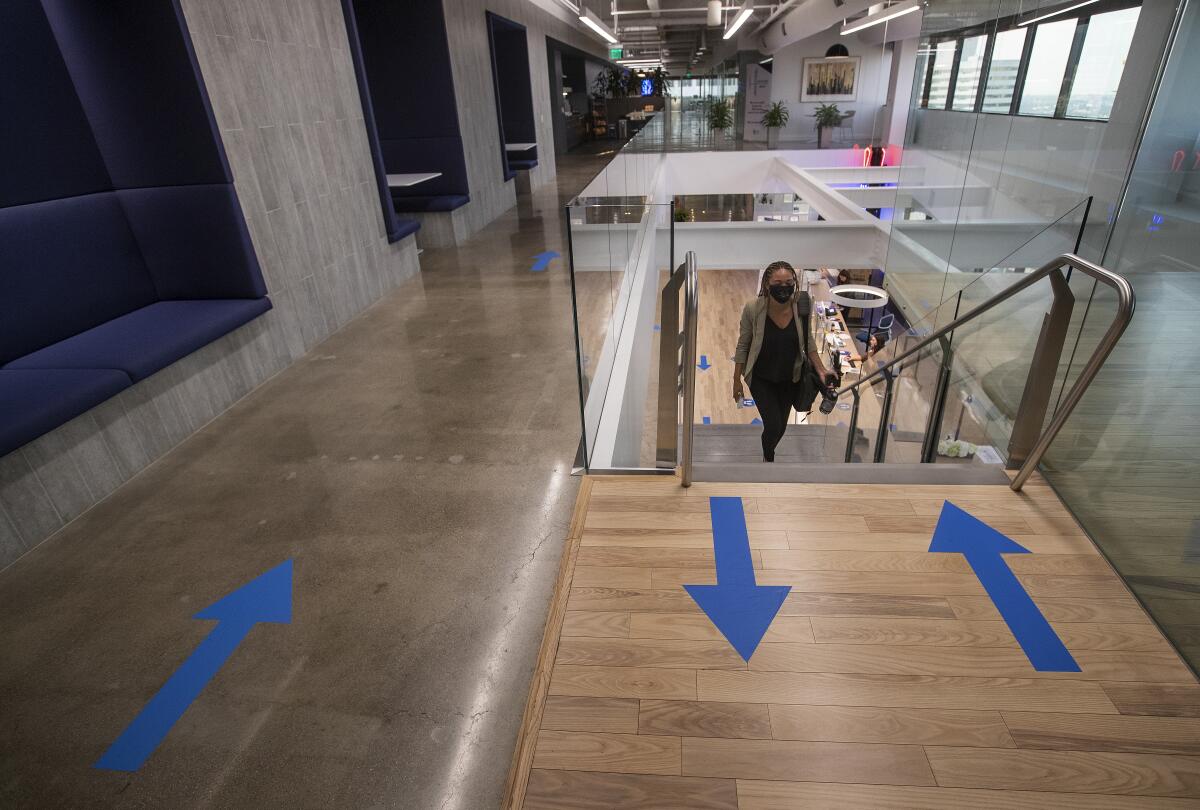
- Share via
A Santa Monica tech giant doesn’t intend to make employees return to the office if they don’t want to.
A defense contractor with a major presence in Palmdale now sees a hybrid online and in-person work schedule as the norm.
A Chatsworth toymaker is trying to figure out how to start bringing workers back to the office without losing talent in a competitive industry.
California employers are still figuring out what a return to the office means amid a global pandemic that has kept millions of office workers at home and disproved long-held myths about remote work. Some are adopting flexible schedules. Some are reopening their offices for a limited number of employees and restricting capacity based on local health regulations.
The bottom line? There’s anything but consistency in how employers are handling the return to work.

The Times spoke with a dozen employers about their plans for bringing employees back to the office, if they were not already working in person. All acknowledged that the workplace culture will change, maybe for the better.
“This is a once-in-a-lifetime chance to evolve some entrenched work habits and to create new and better ways of working,” said Patrick Niemann, Greater Los Angeles managing partner at professional services firm Ernst & Young. “We’re committed to striking the right balance for our people.”
Nearly every company surveyed by The Times said it would not mandate that employees get the COVID-19 vaccine, though businesses have the right to enact mandatory inoculation policies, with some caveats. Many have encouraged workers to get the shot; some said they offer employees paid time off to get the vaccine.
“Not every work situation is designed for remote work.”
— -Alex Alonso, Society for Human Resource Management
Employers are also parsing evolving mask guidelines — and trying to figure out how they will work in practice.
California health officials opted to keep the state’s current indoor mask rules in place until June 15, the target date for fully reopening the state’s economy, after the Centers for Disease Control and Prevention last week said it was safe for fully vaccinated people to go without masks in most places, whether outdoors or inside.
The office beckons. What rights and protections do you have? Will safety and vaccine issues in the workplace prompt lawsuits?
Culture change
Many companies said the shift to remote work during the pandemic changed their perceptions about employee productivity outside of a traditional office setting.
Telecommuting went so well at Lockheed Martin that about 40% of its workers will continue working from home two to three days a week, even after the pandemic subsides. Before the pandemic, fewer than 3% of Lockheed Martin’s employees worked remotely.
This shift to hybrid work is even bigger than it looks: About half of Lockheed Martin’s workforce is in manufacturing, is doing classified work or is deployed with customers, where in-person work remains essential. Now most of the other half — those whose work can be remote — will continue to do so at least part of the week.

Employees at Bel Air Investment Advisors may see more flexibility in their schedules going forward, said David Sadkin, president of the wealth management firm that serves high-net-worth clients, including individuals, families and trusts.
The firm has not set a deadline for employees to return to work, though about a quarter of the firm’s 45-person staff started coming into its Century City offices by the end of April. They joined a core group of about half a dozen traders and other essential staffers who have worked in the office since the start of the pandemic.
“For culture, we do believe that long-term, [it] is important that people spend some time together in the office,” Sadkin said.
Most people say they aren’t ready to give up working from home. Some bosses are looking at a hybrid model. Others are eager to bring workers back.
A year’s worth of largely remote work led to one of MGA Entertainment’s best years in company history. Morale was strong, employees productive and customers pleased with the toymaker’s ability to show new product samples even as designers worked from home, Chief Executive Isaac Larian said.
But even with these victories, Larian is not sold on a future in which all employees telecommute. By early May, about half of MGA’s workers had returned to the office, where plexiglass-partitioned workstations were six feet apart and extended into what was once the company’s showroom.
“Though we have been successful during the past year, there are areas of the business that could have been better had employees been in the office,” he said. “At the same time, we must be sensitive to the real concerns of employees who are still worried that they are not safe in the office.”
Larian said the company will handle concerns from employees who do not want to come back on a “case-by-case basis.”
Face time
Real estate consultant John Burns said he sees the benefit of remote work but also sees pluses for in-person interaction as well.
His company, John Burns Real Estate Consulting, will start leasing extra office space at its Irvine headquarters and a Florida location, so all employees there will have their own offices, even if they come in only a few days a week. The additional rent will be more than $14,000 a month, he said.
The firm will not force its roughly 85 employees nationwide to return to on-site work, but there will be “some very interesting discussions” going forward.
“I believe more career growth opportunities are naturally going to be available to those who come into the office every day,” Burns said in an email. “Our chief career and culture officer will work with everyone individually to make them as successful professionally and personally as we can.”
Love remote work? Here are expert tips for how to negotiate a permanent work-from-anywhere arrangement with your boss.
For a growing number of workers, the question of returning to the office is already a reality. As of May 5, an average of 27% of office workers in the top 10 metropolitan areas have returned to the office, up slightly from 26.5% a week earlier, according to Kastle Systems, which provides key-card entry systems used by many companies and tracks patterns of worker card swipes.
In the Los Angeles metropolitan area, that percentage is 24.4%. It was as low as 21.6% during the week of April 15, 2020.
Mark Ein, chairman of Kastle Systems, has said the return to the office will look more like a “slowly building wave.”
That might lead to some tough decisions about whether large workspaces are still needed after a year of productive remote work. Signings of office leases have declined for about a year, and many tenants have reduced their office spaces or put unused space on the market for sublease.
But not every employer can make remote work the new normal, and companies need to be transparent and upfront with workers about their plans, said Alex Alonso, chief knowledge officer at the Society for Human Resource Management trade group.
“It’s important to remind individuals ... that not every work situation is designed for remote work,” he said.
Companies need to think about whether permanent work-from-home situations are actually part of a company’s stated values, Alonso said. Employers need to ask themselves, “Is this something true to the reasons we have the organization?”
Employers should let workers know that mental health is a priority and make people feel safe discussing it, experts say. Workers can push for improvement too.
Employers also need to involve their workers in return-to-work decisions, said Dr. Pouran D. Faghri, an adjunct professor in the department of environmental health sciences at the UCLA Fielding School of Public Health.
“Let’s rethink work design,” she said. “Let’s think about how we can provide better mental health for employees to have better physical health to perform their jobs and use this as an opportunity, a starting point in the United States, and allow our workplaces to be a better place to work.”
This includes making sure employees know their rights and feel comfortable in the future staying home when they’re sick and knowing their job is secure, said Melanie Sabado-Liwag, an assistant professor in Cal State L.A.’s department of public health and director of the university’s masters of public health program.
“We should be mindful of what our workplace wellness really looks like,” she said.
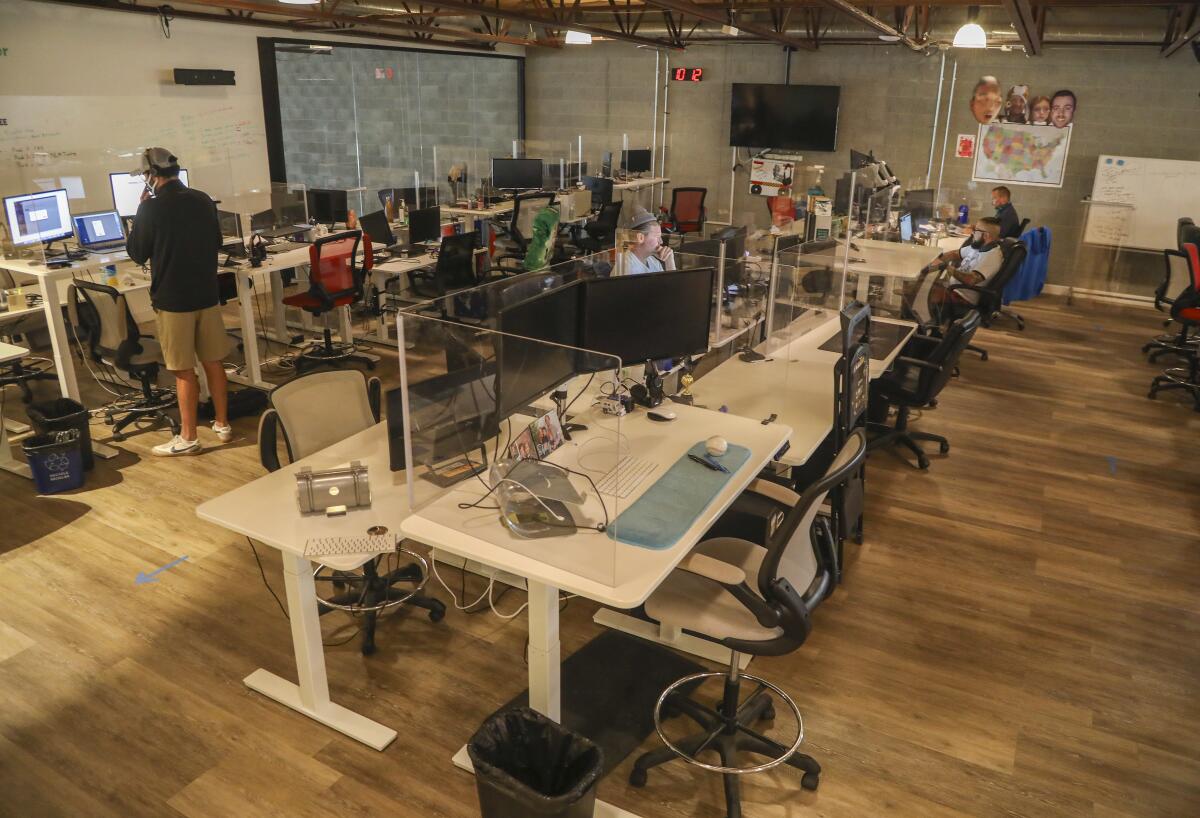
Rethinking spaces
Social media giant Snap has a dedicated return-to-work team that meets daily to review current company protocols and local guidelines to see whether it needs to adjust any of its plans. The company will not require workers to come back to the office if they don’t want to and currently has an RSVP system for those who wish to come in.
One consideration for office returns is ventilation. Pre-pandemic, the typical office building would exchange fresh air for circulated air about once or twice an hour. Now as employees return to the office, the building‘s air should be circulated three to six times an hour, said Yifang Zhu, a professor of environmental health sciences at the UCLA Fielding School of Public Health.
Employers might want to think about opening windows safely to bring in outside air and also investing in higher-quality air filters. MERV 13 filters are a good choice, Zhu said. Those filters need to be fitted properly into the HVAC system to prevent leakage and must be changed periodically in accordance with their life spans.
“There’s plenty of evidence already showing that the COVID-19 virus could be airborne, could be transmitted by aerosols,” she said. “You don’t want those transmissions to go from one room to the other room.”
Public relations firm Olmstead Williams Communications had air purifiers installed in its 12th-floor suite in Westwood last month that are intended to eliminate 99.9% of particulates in the air. The eight-person firm has not yet returned to the office full time.
“We’ll have the cleanest air in the building,” said Tracy Williams, president and chief executive. “But do we still need seven offices and a conference room with a view? Frankly, I don’t know. It’s one of the big questions for every business.”
Times staff writers Margot Roosevelt, Andrew Khouri, Sam Dean, Hugo Martin, Russ Mitchell and Anousha Sakoui contributed to this report.
More to Read
Inside the business of entertainment
The Wide Shot brings you news, analysis and insights on everything from streaming wars to production — and what it all means for the future.
You may occasionally receive promotional content from the Los Angeles Times.
